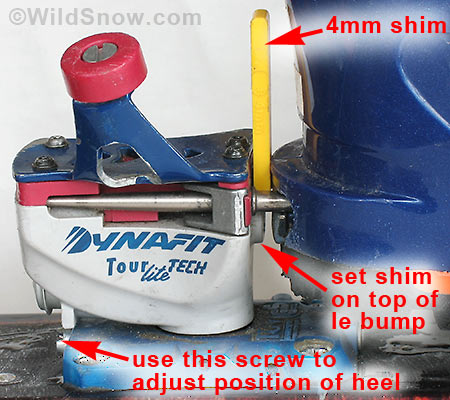I think there is a big part of this discussion that is not often recognized but is really important.
First, there are many things that we can talk about regarding bindings and safety, and there are usually two sides. For example, weight. An good argument could be made that lighter bindings are safer in some circumstances...but a counter argument could be made that heavier bindings might actually ski better, and would likely be more durable, and thus safer. Or there is data that shows that bindings that release laterally at the toe (like classic alpine bindings and some pin bindings) decrease the risk of tib/fib fractures but increase the risk of ACL tears, whereas bindings that release at the heel (like classic pin bindings) do the opposite, they increase the risk of tib/fib fractures but decrease the risk of ACL tears (see the Wildsnow testing). What would you prefer, a broken tib/fib or a torn ACL? These debates can go on forever.
But I think they are largely irrelevant.
In my view, the biggest and most important difference in release function between alpine and pin bindings is related to the interface between boot and binding.
Alpine bindings, and the Shift hybrid binding, hold the boot in the binding with wide, smooth, plastic components that have large surface areas, and mate with corresponding portions of boot soles, for example Gripwalk soles.
In contrast, pin bindings bold the boot in the binding with metal components, meeting at tiny surface areas, and with poor and inconsistent interfaces between boot soles and binding surfaces (For example, where ski brakes contact boot soles).
I think that these differences make pin binding release far more unpredicatble and sensitive to conditions compared to alpine and Shift bindings, and basically render pin binding release unreliable and inconsistent, which is supported by testing, for example, in last year's Skialper binding comparison. Of dozens of pin bindings tested, all of them, save one, had widely different values between left and right sides with the same boot, between different boots, and so on.
I should also say that I find pin binding release testing basically meaningless. For example, let's say you put a pin binding and boot into a Wintersteiger or Montanna machine and run some tests. Then you repeat these tests, with 100, or 200, or 300, or 400, or 500 kg of weight pressing down on the boot (forces easy to generate when skiing). Then twist the ski tips and tails to introduce some torsion. Then apply some lateral force to bend the top of the boot sideways just to get the forces a little skewed. Don't forget to wear out the soles, especially where they contact the ski brakes, and generally gouge, score, and ground the pins and fittings on boot and binding. Finally, spray the whole thing with a mixture of ice, snow, sand, and mud, and heat it up and cool it down mayve 500 cycles. THEN do the test. Do you think you would have any kind of consistent release?
The area where pins and pin fittings meet, and the tiny ramped metal surfaces that the pins have to follow to release a boot, are simply too small to handle these forces with any predictability.
I think that an alpine boot and binding, or the Shift used with a boot with a Griwalk sole, would perform much better in these conditions, because the interface between boot and binding is far more tolerable of inconsistencies, or, to say is another way, the wide, smooth plastic surfaces with large surface area provide a much mold solid and consistent interface.
To say nothing of elasticity which is so important for binding performance and safety.
That's why I have moved my back country and 50/50 set ups completely over to Shifts, and boots with Gripwalk soles.
Further, I think that manufacturers have greatly oversold the release function of pin bindings and/or ignored the obvious problems.
Atomic/Salomon deserve credit for bringing the Shift to market.
OK, rant over. That's my take.


